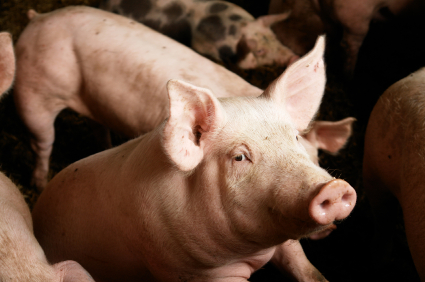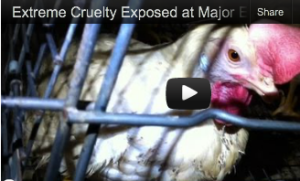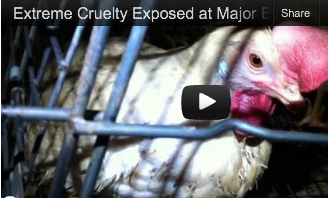1. FDA and antibiotics: If you’re confused, it’s not your fault
FDA and antibiotics: If you’re confused, it’s not your fault
As I mentioned a few weeks ago, the courts have recently told the Food and Drug Administration (FDA) it has to regulate several commonly used antibiotics if they can’t be proven safe. The ruling was the result of a long-running lawsuit by a group of environmental and public health advocates lead by the Natural Resources Defense Council (NRDC) and gave many in the food movement a reason to feel cautiously optimistic.
Meanwhile, the FDA has been moving at a glacial pace on its expressed intention to put a voluntary control on antibiotics in place. And this week it finally put the rubber to the road, in the form of a major press effort and the release of a new set of guidelines for cooperating companies. (The two events are supposedly unrelated, but it’s not hard to see how FDA may want to distract attention away from a court order that requires it to play the bad cop, if it can play up and formalize its role as good cop.)
The agency’s press release is even called “FDA takes steps to protect public health,” and in it the agency promises to “promote the judicious use of medically important antibiotics in food-producing animals” [emphasis mine]. FDA also comes right out and acknowledges that “antimicrobial resistance occurs when bacteria or other microbes develop the ability to resist the effects of a drug. Once this occurs, a drug may no longer be as effective in treating various illnesses or infections.” In other words, the agency is talking. Whether it’ll do any walking to go along with it is yet to be seen.
At the center of the FDA’s narrative is the role of the veterinarian — who, the agency says, will “supervise” the use of antibiotics to “prevent, control and treat illness.” As The New York Times put it: “Farmers and ranchers will for the first time need a prescription from a veterinarian before using antibiotics in farm animals.”
But just how hard such a prescription would be to get raises big questions. You see, livestock producers already often work with veterinarians to help craft their regimens of “subtherapeutic” antibiotics. And just because those veterinarians must now cut through more red tape doesn’t mean they’ll ultimately authorize fewer drugs in the animals’ feed.
The meat industry will always argue for the right to treat sick animals with antibiotics. Of course, the mere fact that those animals are kept in confined animal feeding operations (CAFOs) means that if they don’t get a preventative course of antibiotics, they’re likely to need them later, when the pathogen-filled living conditions do eventually make them sick. And in the eyes of most industrial-scale farmers, there really is no difference between “preventative” dosing and dosing to make the animals grow faster.
As Tom Philpott has been pointing out over at Mother Jones, this gray area provides the industry with a “bull-size loophole.” He also points to a statement from a senior scientist at the Union of Concerned Scientists who warns ominously:
The outlined process appears to give the companies the opportunity to relabel drugs currently slated for growth promotion for disease prevention instead. Such relabeling could allow them to sell the exact same drugs in the very same amounts.
Oh, and did we mention that the industry even has a full three years to do this relabeling? Not to sound too skeptical, but this might be more of a distraction tactic than meets the eye.
2. Another big egg factory gets cracked wide open
Another big egg factory gets cracked wide open
Still haven’t phased those really cheap eggs out of your diet yet? Well, the Humane Society of the U.S. (HSUS) is working hard to ensure that the conditions inside America’s industrial egg farms stays on your radar. This week, HSUS released gruesome footage of hens in cramped, dark battery cages captured over a six-week period inside Pennsylvania’s Kreider Farms. The story got the attention of The New York Times’ Nicholas Kristof, as a convenient follow-up to his arsenic-in-chicken piece from the week before.
And we should probably watch video footage from inside CAFOs while it’s still being made, since the “ag-gag” bills (or bills that would make it illegal to capture such footage) appear to be coming back with a vengeance in farm states. But really — after years of this kind footage popping up, and the resulting attitude of business owners like Ron Kreider (who actually had the nerve to tell a reporter this week that “more than 80 percent of our chickens are housed in larger, modern cages”), it’s getting harder and harder not to generalize. In other words, if a farmer (or any other food production business for that matter) doesn’t want you to see what they’re doing, they’re probably not making anything you’d want to eat.
3. The wrong kind of spring blooms: Pollution from farms causing multi-billion-dollar algae problem
From the kind-of-boring-sounding-but-actually-very-important department, this week the Environmental Working Group (EWG) released a report on “nutrient overload” — the phenomenon that occurs when too much nitrogen from the synthetic fertilizer on large farms enters surrounding waterways. The report, which is titled “Troubled Waters,” focuses on the four states in the core of the Midwestern corn belt — Illinois, Iowa, Minnesota, and Wisconsin — and calculates that removing nitrate alone from drinking water costs taxpayers more than $4.8 billion a year.
Writing on their Farm Plate blog, EWG staffer Don Carr describes the impact on water in the area, saying:
The city of Des Moines, Iowa has one of the largest water treatment plants in the world to clean agricultural pollution. Toledo, Ohio, estimates that it costs an extra $2,000-to-$3,000 a day just to deal with agricultural pollutants in the city’s water.
He suggests that the answer is to tackle the problem at the source, literally, by ensuring that today’s farm subsidies are tied to conservation efforts (i.e. making sure big farms only get paid if they agree to do things like reduce fertilizer use or filter water through wetlands). Otherwise, Carr adds:
Taxpayers end up paying twice, once for the subsidies that encourage all-out production and again for the cleanup. Meanwhile, farm businesses reap year after year of high income and federal subsidies whether they are protecting or polluting drinking water.

An industrial corn planter. (Photo by Minnemom.)
4. EPA refuses to take a critical look at 2,4-D, Monsanto’s new favorite herbicide
A few months back, we reported on 2,4-D, the pesticide that sounds a little like a Star Wars character. The herbicide — which was used in Agent Orange — is generally sprayed on lawns and has been around since World War II. But the NRDC has been raising concern about the toxicity of 2,4-D, ever since Monsanto announced it was developing a new round of GMO seeds that would be bred to be resistant to the chemical. (Just to review, plants grown from resistant seeds can stay alive under near-biblical floods of pesticides while, in theory at least, everything else dies).
It’s also noteworthy that 2,4-D hasn’t often been used on corn fields. (Perhaps the plants weren’t quite resistant enough?)
Anyhow, the NRDC sued the EPA, in part to get a response to a 2008 petition to re-examine the chemical’s safety. The Center for Food Safety — which appears to be working closely with the NRDC — cites a scientist on its website who says that the use of the new GE 2,4-D corn “will trigger an astounding 30-fold increase in 2,4-D use on corn by the end of the decade, assuming widespread planting.”
On Monday, The New York Times reported that the EPA has decided the herbicide will remain on the market for now, saying it “found no cause for concern.” Meanwhile, the USDA is still taking comments until April 27 on the GE seeds.




